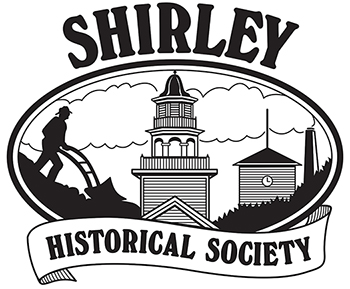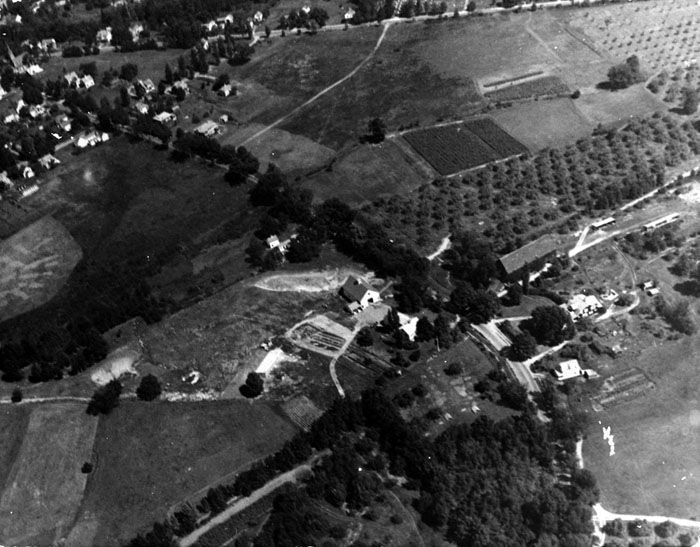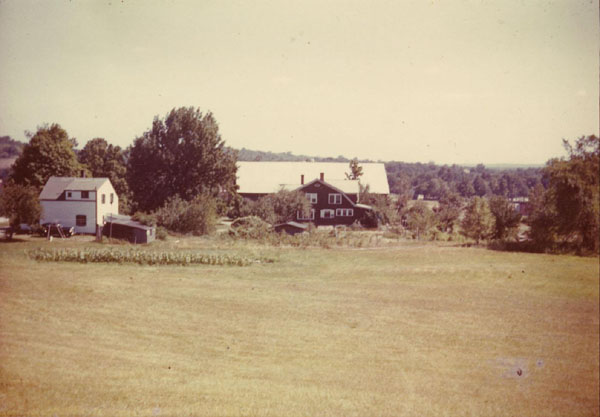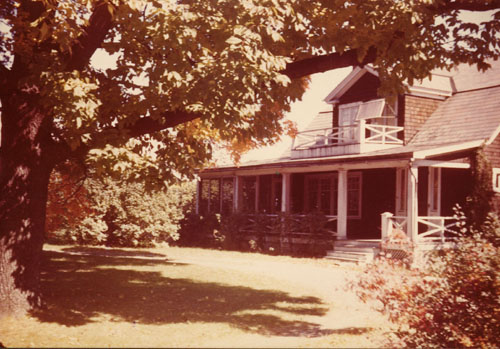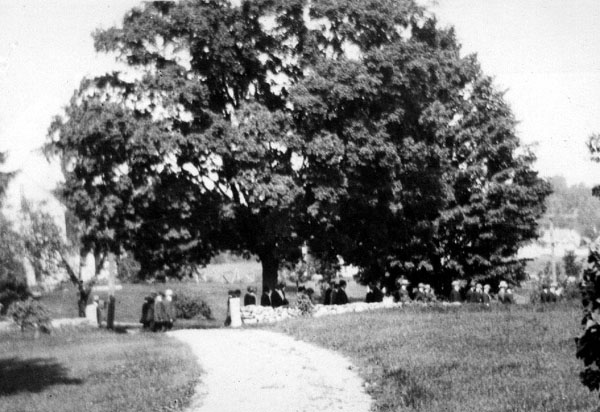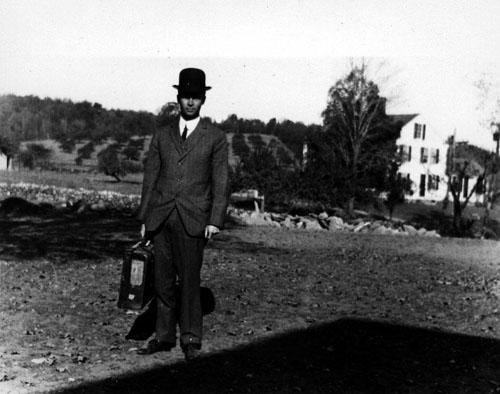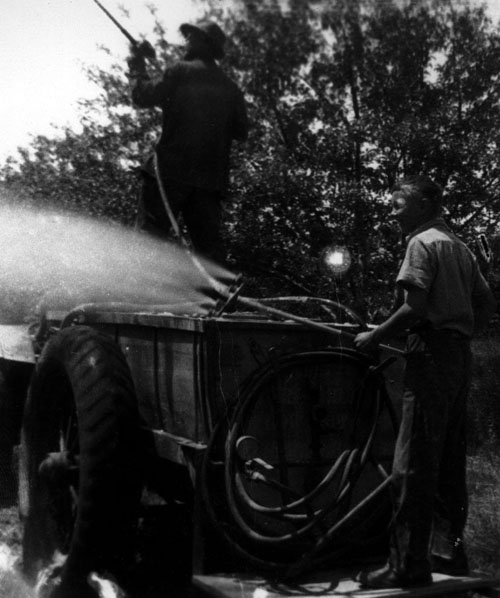Photos and History from the E. Mott Davis Archive at the Shirley Historical Society
History
E. Mott Davis wrote an amateur architectural study entitled “A Description of the Hazen-Davis Barn” in 1985. In his BACKGROUND section, he reports:
The Hazen-Davis barn is a large dairy barn in Shirley, Massachusetts, probably built before the Civil War. It was once the working center of a large farm, but the property is no longer farmed and the barn stands silently, awaiting the changes that will inevitably accompany new uses of the land.
In the History section, he reports:This brief history of the land and the barn is based on oral traditions in the Davis Family, supplemented by photographs in the family records and Seth Chandler’s History of the Town of Shirley (1883). The first recorded use of the land by white settlers was in 1749 when it was purchased by Samuel Hazen. He and his descendants farmed the property until 1910, when his great-great-grandson, Thomas L. Hazen, who had been operating it as a dairy farm, sold it to Edward M. Davis. Thomas Hazen was born in 1843, and it is presumed that either he or his father — also named Thomas L. Hazen — built the barn. Edward Davis planted orchards, which were in full production by the late 1920s. He died in 1943, and I (his son) ran the farm until 1948.
After that, none of the Davis family lived regularly in Shirley; the farm was an absentee-owned operation supervised by the foreman, John F. McIntyre, until the family sold the property after Mrs. Edward Davis’s death in 1963. I know little of the history of the property in the past twenty years. There was some operation of the orchards on a rental basis, but they were largely abandoned by the early 1970s. An attempt was made to develop a retirement community on the property, to be called Applecross, and the barn was to be used as a recreation and craft center, but the plan never reached fruition. The houses have been sold as separate properties. Much of the rest of the former farm, including the barn, is now (1984) owned by the Sage Development Corporation of Bala Cynwyd, Pennsylvania, which calls the property Shirley Community Village.
Edward Davis tore down a silo that was at the northeast corner of the barn; this was after August, 1911, since a photograph with that date has the caption “Panorama from top of silo.” He excavated and built an apple storage cellar extending northward from the barn cellar. His team was stabled in horse stalls in the front (newer) part of the barn until the late 1920s when a tractor replaced the horses. One or two family cows were kept in the cow room of the barn; the lofts were filled with hay for the animals. Much of the rest of the space was used to store empty apple crates in anticipation of the harvest. The principal areas of activity in the 1930s and 1940s were the eastern half of the main floor, the tool room, and the eastern part of the cellar.
During the 1938 hurricane, the main force of which was from the east-southeast, the east door of the barn came crashing in and the pressure created inside the barn by the wind became so great that a section of the north roof at the west end blew out (this was the roof of the newer part). The storm also stripped the wooden shingles from the south roof, leaving those on the north roof intact (except, of course, where the roof had blown out). The shingles were replaced by galvanized iron roofing on the entire south roof and on the section of the north roof that had blown out.
In the 1940s a leak in the cow-room trough caused the floor to weaken, and several wooden posts were placed underneath in the cellar to support the sagging floor.
Additional changes have been made in the barn since it went out of Davis hands in 1963. Partitions have been built on the main floor and the west loft, separating the original part of the interior from the newer part. The horse stalls, on the north side of the newer part, have been taken down. Aroom has been built in the southeast corner of the barn cellar. The roof of the apple storage cellar has collapsed. The north roof of the barn is now, like the south roof, entirely of metal.
In “The Setting” section of his study, Mott reports:About a hundred yards south of the barn a house once stood that was built before the American Revolution by Samuel Hazen, son of the original settler and later a Minute Man. In 1913-1914, Edward Davis built a new house (now occupied by Joseph O’Connell and his family) immediately southeast of the old one, which he then tore down. The flagstones from the floor of the old milk shed, which was an ell on the north side of the Hazen House, were made into a pathway from the front (west) door of the new house northward to the foot of the slope by the southwest corner of the barn. Southwest of the Hazen house in 1910 was a smaller house near the road, later occupied for many years by John McIntyre, the foreman of the Davis farm, and his wife Mary; it has been enlarged in recent years. I heard in my youth that a barn once stood on the site of this smaller house.
East of the barn a metal shed was built in the late 1920s to house a tractor and other farm machinery. A gasoline pump was outside the west end of the shed. The shed still stands today but the pump is gone; doubtless the tank remains underground. South and southeast of this tractor shed were two long wooden sheds in an east-west line. A 1913 photograph shows these sheds. The eastern shed blew down in the 1938 hurricane; the western shed survived for many years thereafter. Both are now gone. After 1938 a new shed was built approximately where the east end of the east shed had been, to store props for the apple trees; it is still there. Just east of it was the gate to the cow pasture, which extended to the southeast. Northeast of the cow pasture gate, and some 50 yards east of the tractor shed, began the gravel pit, which covered an acre or more. Around 1930 Edward Davis dug a deep excavation in the northwestern part of the gravel pit in order to obtain clay with which he built a tennis court in the eastern part of the gravel pit.
North of the barn, between it and a steep drop-off, there was a small deep circular pit, possibly a dry well, lined with masonry.
Water for the animal troughs in the barn came by gravity through an underground pipe from an artesian well or spring four or five hundred yards to the southeast, at the southeast corner of the hillside (formerly a hay field) south of the houses, next to the woods. I am told that this well was filled with earth when a road was constructed for the Applecross development in the 1970s. Another flowing spring, lined with masonry, is below the front of the barn, between it and Lancaster Road. There is a story that a pipe ran from this spring to Tom Hazen’s house, the second house south of the public library, about a half mile north of the barn.
Prepared for the Shirley Historical Society by Bob Burkhardt. Last revision: January 11, 2006.
